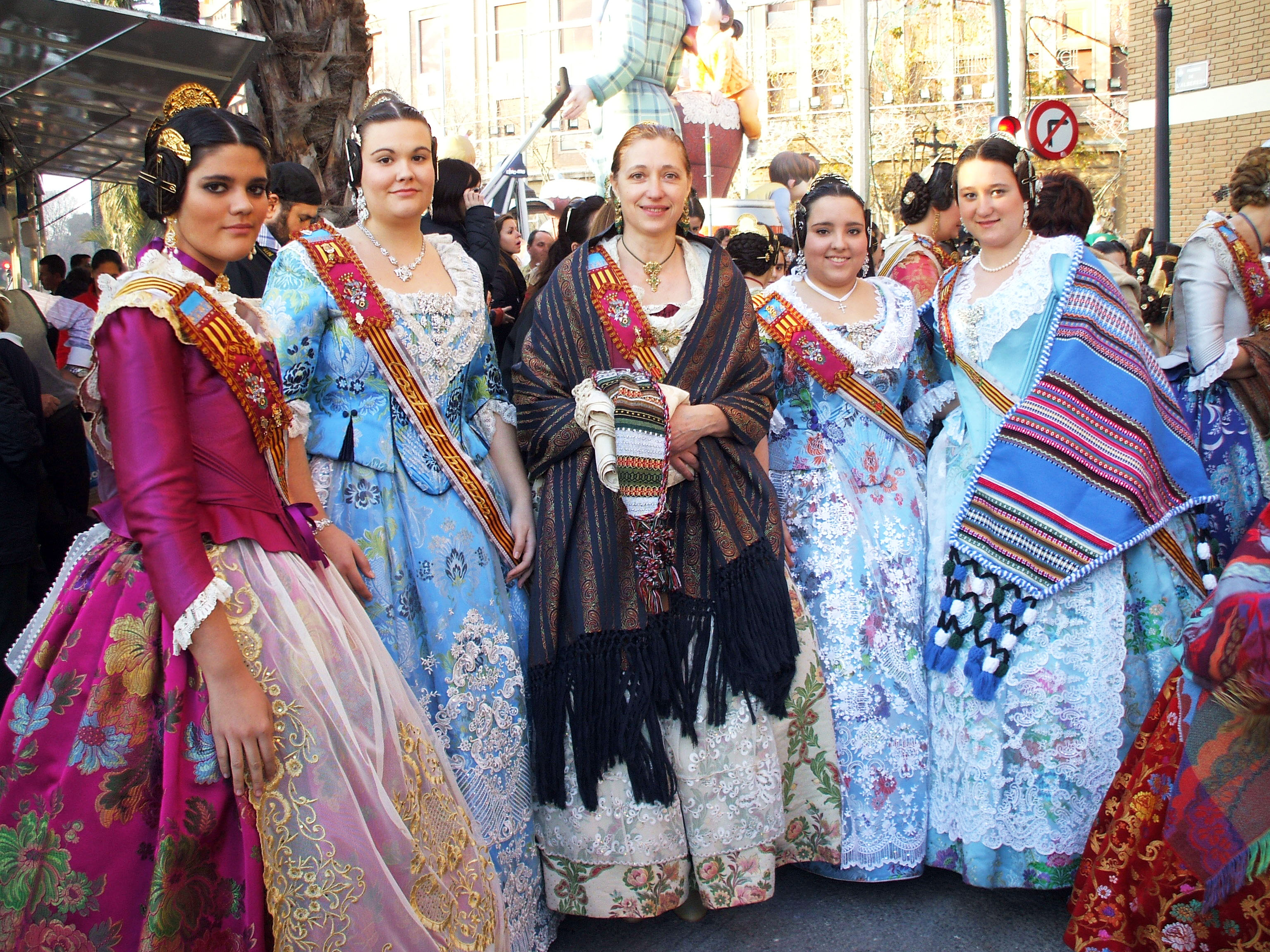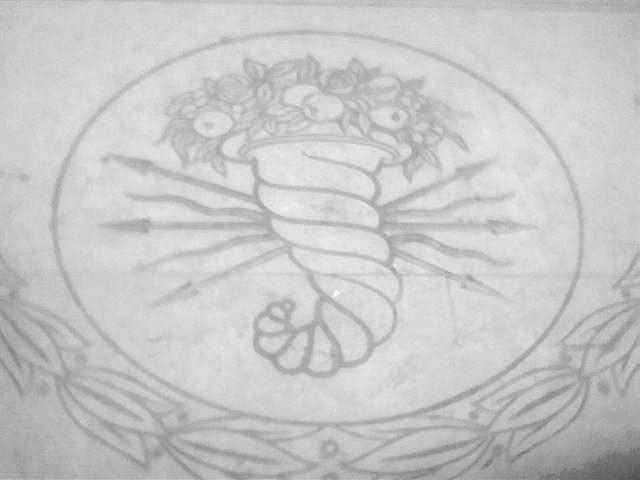|
Mascletà
A mascletà (pronounced in Valencian: askleˈta is a pyrotechnic event characterized by the achievement of a noisy and rhythmic composition that features, particularly during daytime, in street festivities; it is typical of the Valencian Community (Spain). It gets its name from the ''masclets'' (very loud firecrackers) that are tied by a wick to form a line or firework display. These are usually fastened at a medium height with ropes or raised by cannons. Unlike the fireworks that seek visual stimulation, the ''mascletades'' (pronounced in Valencian /maskle'taes/ and written in an informal way as ''mascletaes'') aim to stimulate the body through strong rhythmic sounds of ''masclets''; some people consider these sounds as "musical" sounds, while not neglecting the importance of the visual aspect. What distinguishes a mascletà from a succession of explosions is the rhythm that ''masclets'' must create to explode. It is essential that the force of the explosions must gradually ri ... [...More Info...] [...Related Items...] OR: [Wikipedia] [Google] [Baidu] |
Fallas De Valencia 2023 Mascletà 18-3
The Fallas (; ) is a traditional celebration held annually in commemoration of Saint Joseph in the city of Valencia, Spain. The five main days celebrated are from 15 to 19 March,''Fallas of Valencia'' Fundació Visit Valencia while the Mascletà, a pyrotechnic spectacle of firecracker detonation, takes place every day from 1 to 19 March. The term ''Fallas'' refers to both the celebration and the Falla monuments (''Falla'', singular; ''Fallas''/, plural) burnt during the celebration. The Fallas (''Falles'' in Valencian) festival was added to UNESCO's intangible cultural heritage of humanity list on 30 November 2016. A number of towns in the Valencian Community have similar cele ... [...More Info...] [...Related Items...] OR: [Wikipedia] [Google] [Baidu] |
Valencia
Valencia ( , ), formally València (), is the capital of the Province of Valencia, province and Autonomous communities of Spain, autonomous community of Valencian Community, the same name in Spain. It is located on the banks of the Turia (river), Turia, on the east coast of the Iberian Peninsula on the Mediterranean Sea. It is the Ranked lists of Spanish municipalities, third-most populated municipality in the country, with 825,948 inhabitants. The urban area of Valencia has 1.5 million people while the metropolitan region has 2.5 million. Valencia was founded as a Roman Republic, Roman colony in 138 BC as '. As an autonomous city in late antiquity, its militarization followed the onset of the threat posed by the Spania, Byzantine presence to the South, together with effective integration to the Visigothic Kingdom of Toledo in the late 6th century. Al-Andalus, Islamic rule and acculturation ensued in the 8th century, together with the introduction of new irrigation syst ... [...More Info...] [...Related Items...] OR: [Wikipedia] [Google] [Baidu] |
Bonfires Of Saint John
The Bonfires of Saint John (, ) are a traditional and popular festival celebrated in the city of Alicante, Spain, from 19 to 24 June. The celebration ultimately stems from a tradition of bonfires for Saint John's Eve that can be found in many places, among them the Mediterranean coast of Spain, especially Catalonia and the Valencian Community; in Alicante, it's the official and most important festivity in the city. It was officially declared as a Fiesta of International Tourist Interest in 1983 and a Bien de Interés Cultural in 2014. Background Midsummer eve festivals ( St. John's Eve among Christians) have roots in ancient celebrations related to the summer solstice. Bonfires were lit to protect against evil spirits which were believed to roam freely when the sun was turning southward again. In later years, witches were also thought to be on their way to meetings with other powerful beings. Fire features in many of the celebrations, with people gathering together and cr ... [...More Info...] [...Related Items...] OR: [Wikipedia] [Google] [Baidu] |
Magdalena Festival
The Magdalena Festival is the main festivity of Castellón de la Plana, the capital city of the province of Castelló, in the Valencian Community, Spain. It commemorates the origins of the city, recalling the move of the city from the Hill of Mary Magdalene to the fertile coastal plain in 1251. This festival lasts for 9 days. It starts on the third Saturday of Lent and it was declared a Fiestas of International Tourist Interest of Spain, Fiesta of International Tourist Interest in 2010. Historical background History of the festival The ''semana festera'' Dates of the festival * 2015: from 7 to 15 March. Next celebrations * 2016: from 27 February to 7 March. * 2017: from 18 to 26 March. * 2018: from 3 to 11 March. * 2019: from 23 March to 1 April. * 2020: from 14 to 22 March. The first day of the Magdalena Festival is the third Saturday of Lent. Considering that the first day of Lent (since the First Council of Nicaea in 325) is the first Sunday after the full ... [...More Info...] [...Related Items...] OR: [Wikipedia] [Google] [Baidu] |
Traditions Involving Fire
A tradition is a system of beliefs or behaviors (folk custom) passed down within a group of people or society with symbolic meaning or special significance with origins in the past. A component of cultural expressions and folklore, common examples include holidays or impractical but socially meaningful clothes (like lawyers' wigs or military officers' spurs), but the idea has also been applied to social norms and behaviors such as greetings, etc. Traditions can persist and evolve for thousands of years— the word ''tradition'' itself derives from the Latin word ''tradere'' literally meaning to transmit, to hand over, to give for safekeeping. While it is reportedly assumed that traditions have an ancient history, many traditions have been invented on purpose, whether it be political or cultural, over short periods of time. Various academic disciplines also use the word in a variety of ways. The phrase "according to tradition" or "by tradition" usually means that what follows i ... [...More Info...] [...Related Items...] OR: [Wikipedia] [Google] [Baidu] |
Fireworks Events In Europe
Fireworks are low explosive pyrotechnic devices used for aesthetic and entertainment purposes. They are most commonly used in fireworks displays (also called a fireworks show or pyrotechnics), combining a large number of devices in an outdoor setting. Such displays are the focal point of many cultural and religious celebrations, though mismanagement could lead to fireworks accidents. Fireworks take many forms to produce four primary effects: noise, light, smoke, and floating materials (confetti most notably). They may be designed to burn with colored flames and sparks including red, orange, yellow, green, blue, purple and silver. They are generally classified by where they perform, either 'ground' or 'aerial'. Aerial fireworks may have their own propulsion (skyrocket) or be shot into the air by a mortar (aerial shell). Most fireworks consist of a paper or pasteboard tube or casing filled with the combustible material, often pyrotechnic stars. A number of these tubes or ca ... [...More Info...] [...Related Items...] OR: [Wikipedia] [Google] [Baidu] |
Festivals In Spain
Tourism in Spain is a major contributor to national economic life, with foreign and domestic tourism contributing to 12.3% of Spain's GDP (in 2023). The international tourist expenditure in 2024 was around 126 billion euros. Since 1959, the tourism industry has become one of the key sectors of the Spanish economy. The country has been a popular destination for summer holidays, especially with large numbers of tourists from the United Kingdom, Republic of Ireland, Ireland, France, Germany, Italy, the Benelux, and the United States, among others. Accordingly, Spain's foreign tourist industry has grown into the second-biggest in the world. In 2024, Spain was the second most visited country in the world, recording around 94 million international tourists, which marked the eighth consecutive year of record-breaking numbers. Due to the coronavirus pandemic in 2020, only 18.9 million tourists visited Spain. These dramatic figures were devastating for the tourism sector and were a r ... [...More Info...] [...Related Items...] OR: [Wikipedia] [Google] [Baidu] |
Culture Of The Valencian Community
Culture ( ) is a concept that encompasses the social behavior, institutions, and norms found in human societies, as well as the knowledge, beliefs, arts, laws, customs, capabilities, attitudes, and habits of the individuals in these groups.Tylor, Edward. (1871). ''Primitive Culture''. Vol 1. New York: J. P. Putnam's Son Culture often originates from or is attributed to a specific region or location. Humans acquire culture through the learning processes of enculturation and socialization, which is shown by the diversity of cultures across societies. A cultural norm codifies acceptable conduct in society; it serves as a guideline for behavior, dress, language, and demeanor in a situation, which serves as a template for expectations in a social group. Accepting only a monoculture in a social group can bear risks, just as a single species can wither in the face of environmental change, for lack of functional responses to the change. Thus in military culture, valor is counted a ... [...More Info...] [...Related Items...] OR: [Wikipedia] [Google] [Baidu] |
Radio Clásica
Radio Clásica is a Spanish free-to-air radio station owned and operated by Radio Nacional de España (RNE), the radio division of state-owned public broadcaster Radiotelevisión Española (RTVE). It is the corporation's second radio station, and is known for broadcasting classical music. It was launched on 22 November 1965 as the second RNE station. The station was initially simply referred to as "Segundo Programa". It received other names, such as "RNE 2" and "RNE C". History Launched in November 1965 as the "Segundo Programa" (second programme) of RNE – and subsequently known as "RNE 2" (1988–94), later still as "RNE C" (1994–99) – Radio Clásica's schedule is made up of presenter-led programmes of classical music (in the widest sense) plus relays (both live and recorded) of concerts, other musical recitals, and complete operas. The station also showcases such genres as flamenco, folk music, zarzuela and jazz, as well as "established" popular music. It is unusual amon ... [...More Info...] [...Related Items...] OR: [Wikipedia] [Google] [Baidu] |
Miguel Álvarez-Fernández
Miguel Álvarez-Fernández (born 28 November 1979 in Madrid, Spain) is a sound artist, composer, filmmaker, theorist and curator working between Madrid and Berlin, where he has taught at the Electronic Music Studio of Technische Universität Berlin.The semina"The Sound of Meaning" organized by the "Institut für Sprache und Kommunikation". He also lectures regularly at the Department of Art History and Musicology of the University of Oviedo (Spain), and at the European University of Madrid as a specialist in Sound Art and Electroacoustic music. His artistic and theoretical work addresses problematic concepts like the relationships between sexuality and music (both understood as socio-cultural constructions, rather than 'natural categories'), or the connections between interactive processes and the illusion of control. Álvarez-Fernández has explored these issues in his sound installations and musical compositions, both alone and as a member of the art group DissoNoiSex. Caree ... [...More Info...] [...Related Items...] OR: [Wikipedia] [Google] [Baidu] |
Sound Art
Sound art is an artistic activity in which sound is utilized as a primary Time-based media, time-based Artistic medium, medium or material. Like many genres of contemporary art, sound art may be interdisciplinary in nature, or be used in Cross-genre, hybrid forms. According to Brandon LaBelle, sound art as a practice "harnesses, describes, analyzes, performs, and interrogates the condition of sound and the process by which it operates." In Western art, early examples include the Futurist Luigi Russolo's ''Intonarumori'' noise intoners (1913), and subsequent experiments by dadaists, Surrealism, surrealists, the Situationist International, and in Fluxus events and other Happenings. Because of the diversity of sound art, there is often debate about whether sound art falls within the domains of visual art or experimental music, or both. Other artistic lineages from which sound art emerges are conceptual art, minimalism, site-specific art, sound poetry, electro-acoustic music, spoken wo ... [...More Info...] [...Related Items...] OR: [Wikipedia] [Google] [Baidu] |









